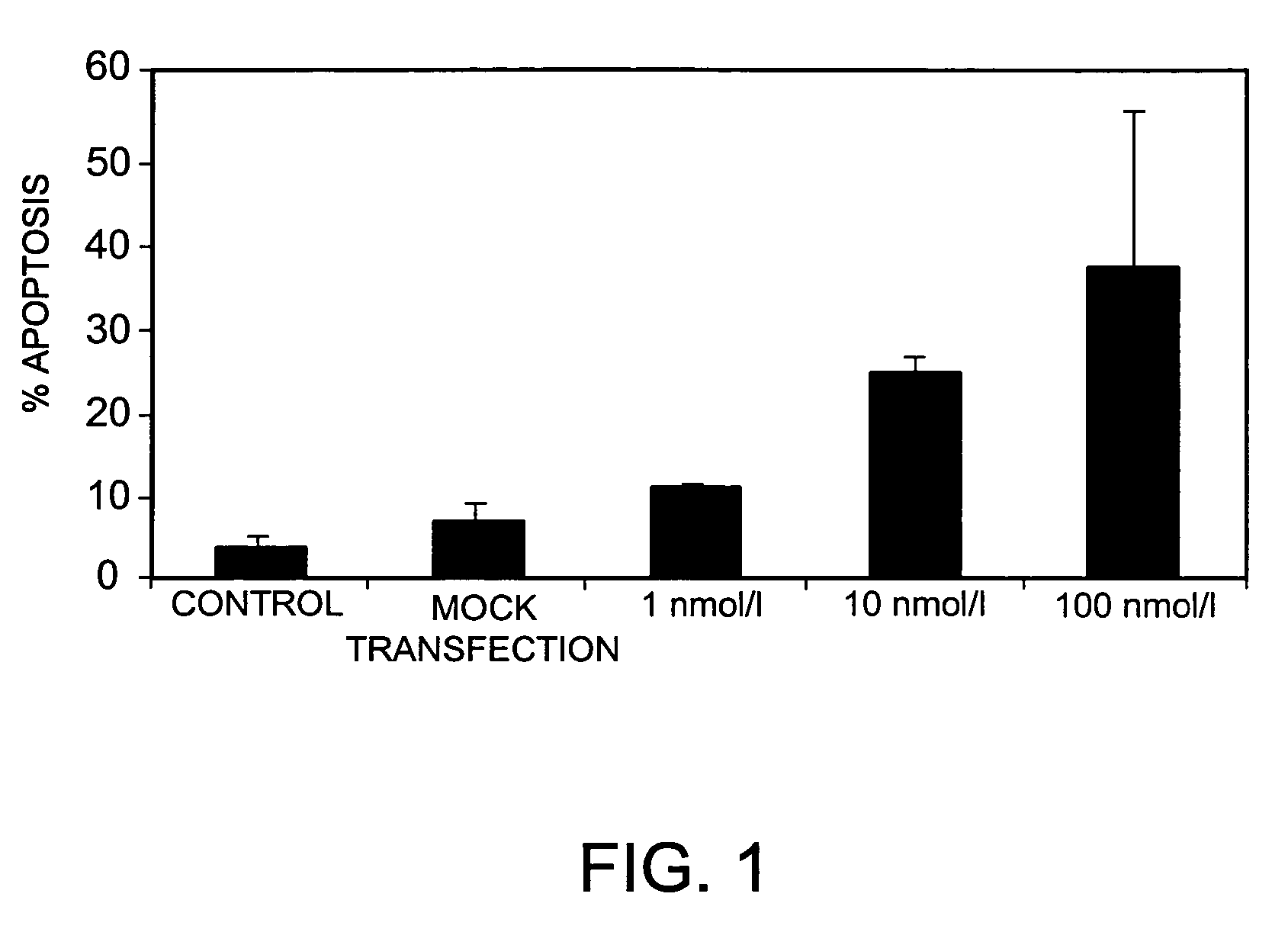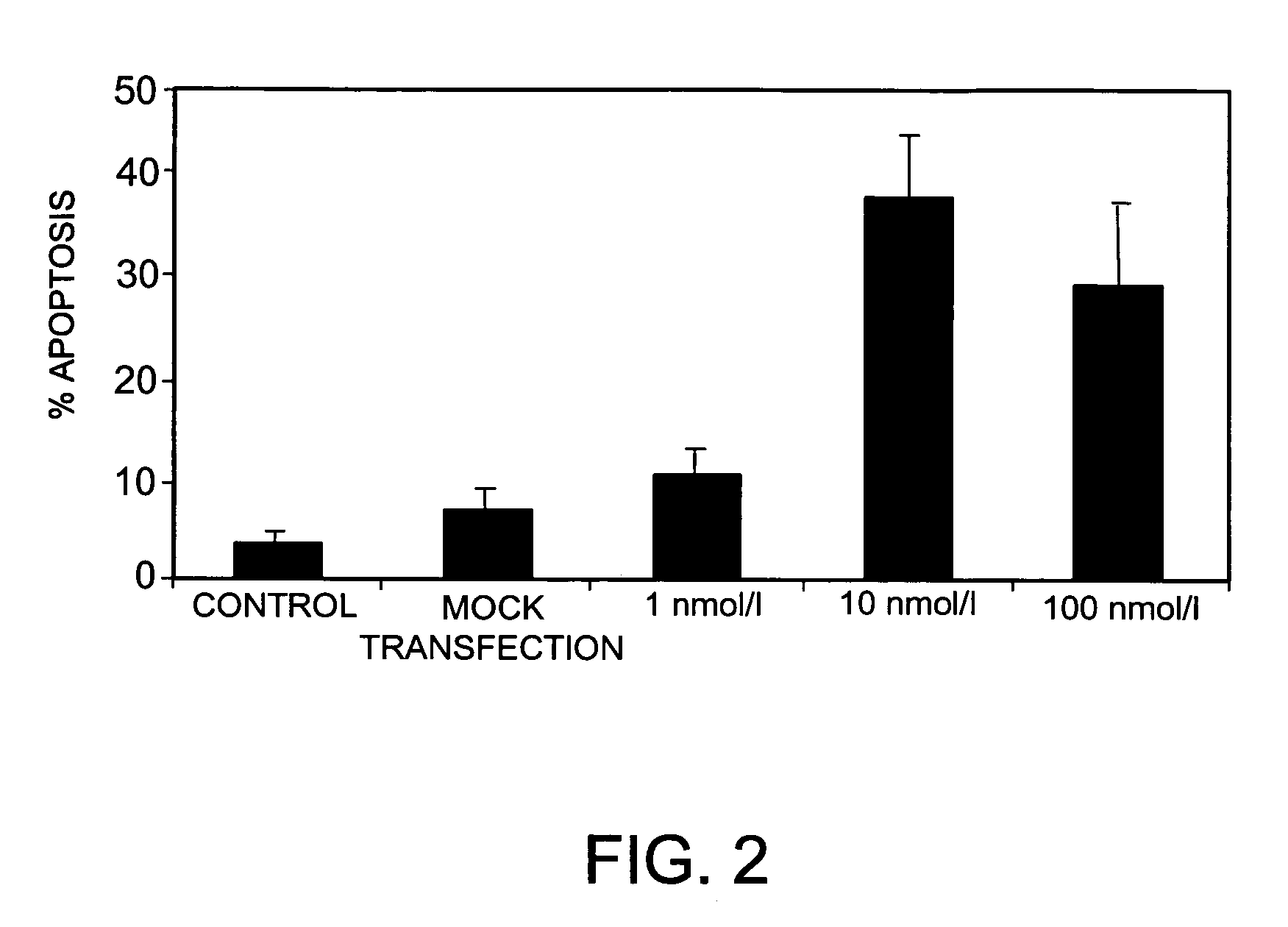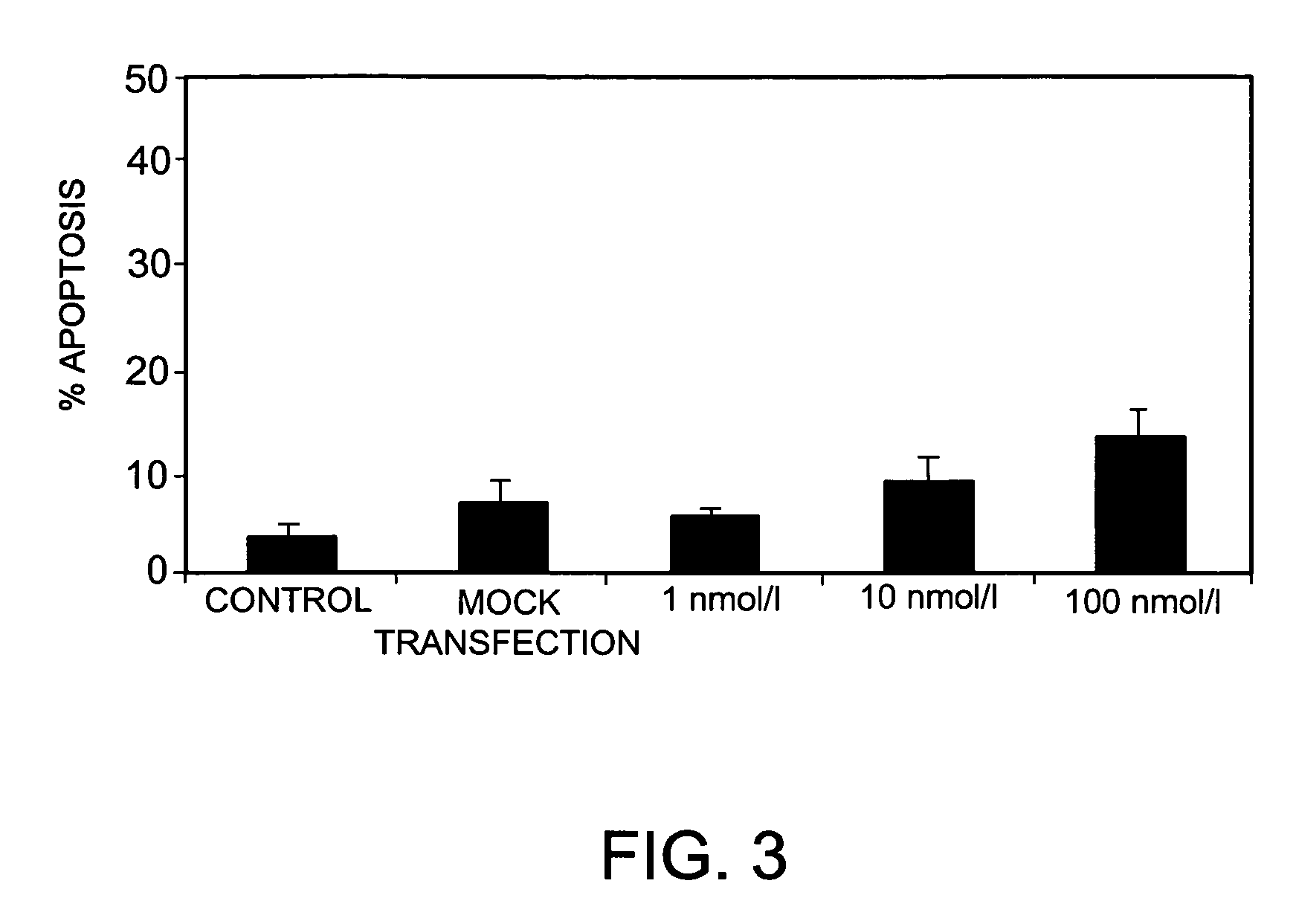Compositions and methods for inhibiting expression of anti-apoptotic genes
a technology of anti-apoptotic genes and compositions, applied in the field of double-stranded ribonucleic acid, can solve the problems of anti-sense approaches, low efficacy, inherent limitations of both agents, etc., and achieve the effect of inhibiting the expression of a target gen
- Summary
- Abstract
- Description
- Claims
- Application Information
AI Technical Summary
Benefits of technology
Problems solved by technology
Method used
Image
Examples
example 1
Walking of Bcl-2
[0183]Selection of Sequences for siRNA Synthesis
[0184]Sequential BLAST searches (using the following parameters: Word size 7, Expect value 1000, mismatch penatlty −1) were performed to identify sequences of 23 nucleotides within the sequence of human bcl-2 alpha (GenBank accession number M13994) or bcl-2 beta (GenBank accession number M13995) with 3 or more mismatches to any other human mRNA or genomic sequence. The 21 nucleotide sequence from position 3 to 23 of the 23mers were used for the synthesis of the sense strands of approximately 220 siRNAs. The corresponding antisense strands were synthesized to comprise a nucleotide sequence fully complementary to the 23mer search query, resulting in a 2-nucleotide single stranded overhang on the 3′ end of the antisense strand of the siRNA. The sequences of all siRNAs thus selected and synthesized are shown in Table 1, SEQ ID 7 to 444.
[0185]The 23 nucleotide sequences thus selected were further compared by BLAST searching...
example 2
Optimization of siRNAs by Chemical Modification
[0198]As has been experienced by those working in the antisense field, ribonucleic acids are often quickly degraded by a range of nucleases present in virtually all biological environments, e.g. endonucleases, exonucleases etc. This vulnerability may be circumvented by chemically modifying these oligonucleotides such that nucleases may no longer attack. Consequentially, 8 siRNAs were chosen, designated B21, B22, B25, B133, B442, B519, B522, B523, and B529 in Table 2, which showed superior activity in the assay described in Example 1, for the testing of the effect of stabilizing modifications on the activity of siRNAs to inhibit gene expression.
[0199]To establish whether the chemical modification of nucleotides interferes with the ability of siRNAs to inhibit gene expression, we chose to start with a minimal modification. siRNAs corresponding to B21, B22, B25, B133, B442, B519, B522, B523, and B529, but comprising 2′-O-Methyl substituted...
example 3
Inhibition of Bcl-2 Gene Expression by RNA Interference in MelJuso Cells
[0208]To further test the ability of siRNAs bearing nucleotide modifications to inhibit the expression of Bcl-2, a range of differently modified siRNAs specific for Bcl-2, and derived from siRNA B442 above, was tested in MelJuso cells stably transfected with a Bcl-2 / GFP-fusion protein. The siRNAs tested bore various combinations of the following modifications: 2′-O-Methyl groups in positions 21 and 22 (counting 5′ to 3′) of the antisense strand; phosphorothioate linkages between positions 21 and 22 (counting 5′ to 3′) of the antisense strand; phosphorothioate linkages between the 4 3′-most and the 4 5′-most nucleotides in the sense strand; all linkages replaced by phosphorothioates in the sense or antisense strand; and a cholesteryl derivative linked to the 5′-end of the sense or antisense strand via a phosphorothioate linkage.
Creation of Cell Line Mel Juso-GFP-BCL2
[0209]A reporter cell line for estimating the e...
PUM
| Property | Measurement | Unit |
|---|---|---|
| weight | aaaaa | aaaaa |
| pH | aaaaa | aaaaa |
| pH | aaaaa | aaaaa |
Abstract
Description
Claims
Application Information
 Login to View More
Login to View More - R&D
- Intellectual Property
- Life Sciences
- Materials
- Tech Scout
- Unparalleled Data Quality
- Higher Quality Content
- 60% Fewer Hallucinations
Browse by: Latest US Patents, China's latest patents, Technical Efficacy Thesaurus, Application Domain, Technology Topic, Popular Technical Reports.
© 2025 PatSnap. All rights reserved.Legal|Privacy policy|Modern Slavery Act Transparency Statement|Sitemap|About US| Contact US: help@patsnap.com



